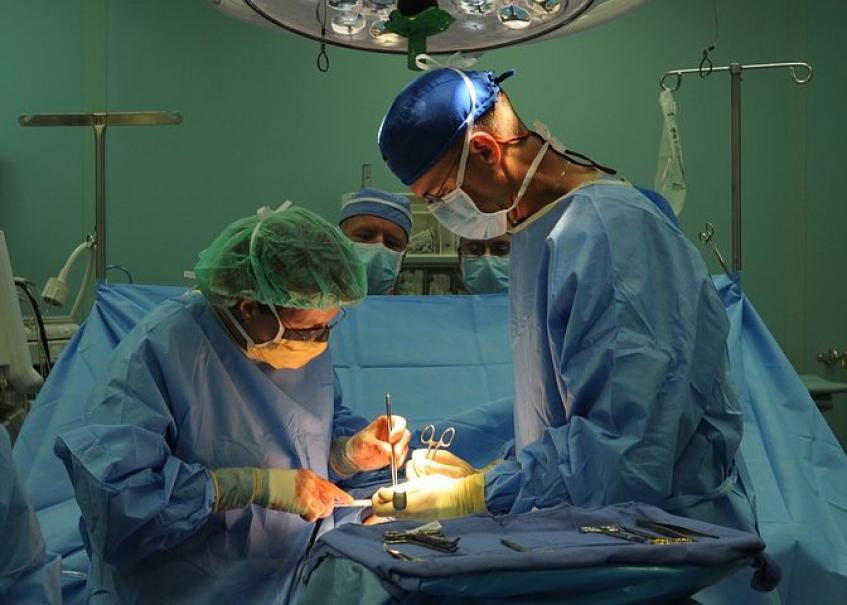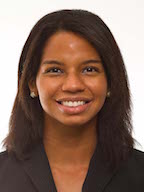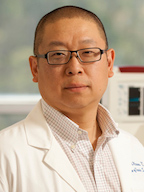Turning Surgeons Into Innovators Without Taking Them Out of the OR
Academic hospitals have all the makings for rich medical device development. They have physicians to identify surgical needs, researchers to test theories, bioengineers to design and create devices and patients to participate in clinical trials.
However, the disconnect between engineering and surgical departments makes innovation a challenge. So does surgeons' all-consuming job Number One—treating patients.
Providing the Infrastructure for Surgeons to Innovate
Surgical Innovations, part of the University of California, San Francisco's Department of Surgery and Bioengineering & Therapeutic Sciences, aims to open communication between clinical academic surgeons and bioengineering colleagues. It also gives surgeons a platform to develop life-enhancing and lifesaving medical devices.
 Launched in 2015, Surgical Innovations draws on the expertise of one of the country's top medical schools for research and primary care. UCSF providers conduct more than 1,300 clinical trials per year. Its research department boasts more than 1,800 active inventions.
Launched in 2015, Surgical Innovations draws on the expertise of one of the country's top medical schools for research and primary care. UCSF providers conduct more than 1,300 clinical trials per year. Its research department boasts more than 1,800 active inventions.
"Clinical trainees and grad students work closely together," said Surgical Innovations engineering lead Shuvo Roy, PhD. "We also have post-doc engineers who move technology from bench to clinical studies."

 Surgical Innovations evolved out of UCSF's Pediatric Device Consortium (PDC), which creates and develops devices to improve children's health. Michael Harrison, MD, who founded and leads PDC, pioneered fetal surgery procedures at UCSF in the early 1980s.
Surgical Innovations evolved out of UCSF's Pediatric Device Consortium (PDC), which creates and develops devices to improve children's health. Michael Harrison, MD, who founded and leads PDC, pioneered fetal surgery procedures at UCSF in the early 1980s.
"There were no devices or tools back then," Harrison said. "We were inventing, designing, developing, and using devices without regulatory control. And we were very successful."
Harrison also recognized an ongoing need for pediatric-specific devices. FDA agreed. In 2007, Congress passed the Pediatric Medical Device Safety and Improvement Act to stimulate pediatric device development. UCSF became one of the few institutions to develop pediatric devices.
Surgical Innovations expands on PDC's infrastructure by enabling more surgeons to succeed in medical device innovation. For example, Roy leads the development of a bioartificial pancreas to help people with unstable Type I diabetes.
Also called Brittle diabetes, unstable diabetes is a severe form of the disease that causes unpredictable, severe blood glucose level swings. Although insulin pumps and continuous glucose monitoring systems(CGM, aka Artificial Pancreas) help, Roy said often CGMs pose a 10-minute to 15-minute delay between levels measured in tissue and blood glucose levels. The bioartificial pancreas works in real-time.
The bioartificial pancreas uses silicon nanopore membranes developed by UCSF's Biodesign Laboratory. Insulin-producing cells are put into a pouch of silicon nanopore membranes, which protects cells from the body's immune system. Surgeons insert the bioartificial pancreas between a small artery and a vein, which allows for an immediate insulin response.
Roy said the bioartificial pancreas doesn't require sensors. "The cells are the sensor," he said. There's also no need for lifelong immunosuppression medication, which is necessary for a pancreas transplant.
"The silicon nanopore membranes allow us to achieve a high level of immune protection and allow small molecules to pass through," he said. "And it's biocompatible. The device can be used inside the body for months, or possibly years, at a time."
Roy's team of vascular surgeons, immunologists, and other specialists have tested the concept in pigs. Clinical trials are the next step.
Smart Pressure Ulcer Detection

 Isabelle Chumfong, MD (pictured left), spent her research years working with Surgical Innovations clinical lead Hanmin Lee, MD (pictured right), biomedical engineers Sachin Rangarajan, Michael Hemati, and medical device engineer Sharvari Deshpande, to develop SmartDerm, a wearable sensor that measures pressure levels on the skin to help prevent pressure ulcers. Pressure ulcers affect 2.5 million patients a year at roughly $9.1 billion to $11.6 billion annually.
Isabelle Chumfong, MD (pictured left), spent her research years working with Surgical Innovations clinical lead Hanmin Lee, MD (pictured right), biomedical engineers Sachin Rangarajan, Michael Hemati, and medical device engineer Sharvari Deshpande, to develop SmartDerm, a wearable sensor that measures pressure levels on the skin to help prevent pressure ulcers. Pressure ulcers affect 2.5 million patients a year at roughly $9.1 billion to $11.6 billion annually.
The current standard of care to determine pressure ulcer risk is the Braden Scale, developed in 1987. The Braden Scale examines six criteria, of which, Lee said don't always give an accurate picture. SmartDerm uses Big Data to more clearly determine risk, while the sensors measure pressure.
"We use large data sets to determine who's at highest risk through a proprietary machine learning algorithm," Lee said. "Our scoring system is more accurate and cost-effective than the Braden Scale. The low-profile sensor gives us real-time data on pressure ulcers—where they are on the body and for what period of time."
Rangarajan and Hemati, both UCSF Masters of Translational Medicine graduates, created a startup for SmartDerm. Deshpande joined later to focus on analyzing large data and creating the risk algorithm.
Lee said preliminary data shows the devices don't harm patients. The next step is a clinical trial to determine if SmartDerm trumps the Braden Scale.
Magnets for Sleep Apnea
Harrison leads the development of Magnap, a device used to treat moderate obstructive sleep apnea (OSA). OSA affects about 18 million adults, causing health problems and an eroded quality of life. The most common treatment is a continuous positive airway pressure device (CPAP), which is effective, but not popular with patients. It's uncomfortable, noisy, and may slip off in the middle of the night (or the patient pulls it off in frustration).
Magnap uses magnets instead of a mask to provide a more comfortable solution. Surgeons insert a small magnet on the hyoid bone in the neck, secured by sutures. During sleep, the patient wears a fitted collar that contains a second magnet. The collar magnet attracts the internal magnet, keeping the airway open. "It uses very little force, only a couple pounds of pressure," Harrison said.
Surgical Innovations is in the midst of a 10-person clinical trial for Magnap. Harrison said the first patient reported the device "saved my life." Three additional patients are currently undergoing treatment.
Depending on the outcome of the current trial, Harrison said he plans to seek FDA clearance.
Harrison said Surgical Innovations will continue to serve as a resource to its clinicians, graduate students and to the medtech community at large. "When someone from industry says 'we have a problem,' we'll see if we can figure out a solution."
